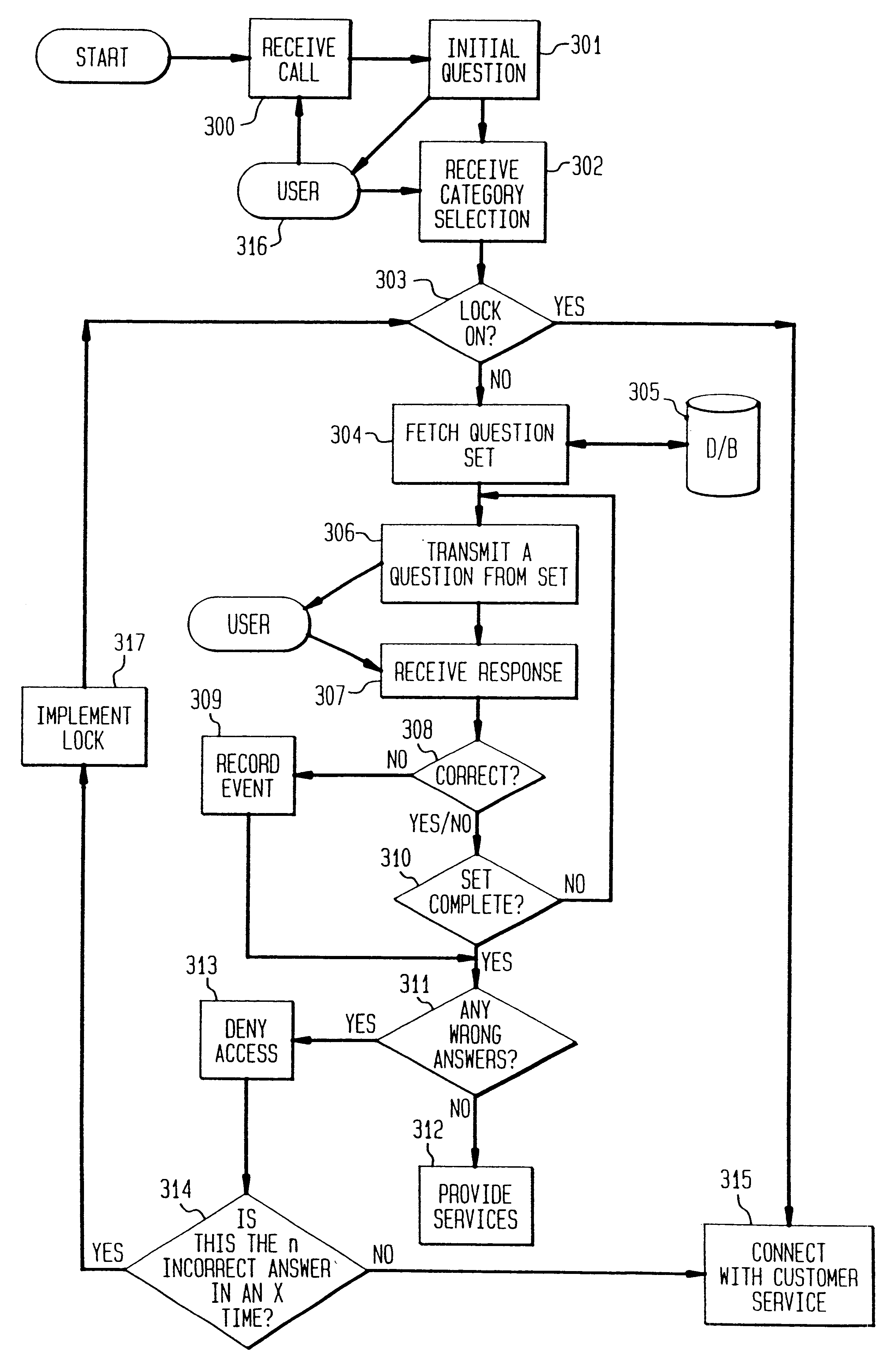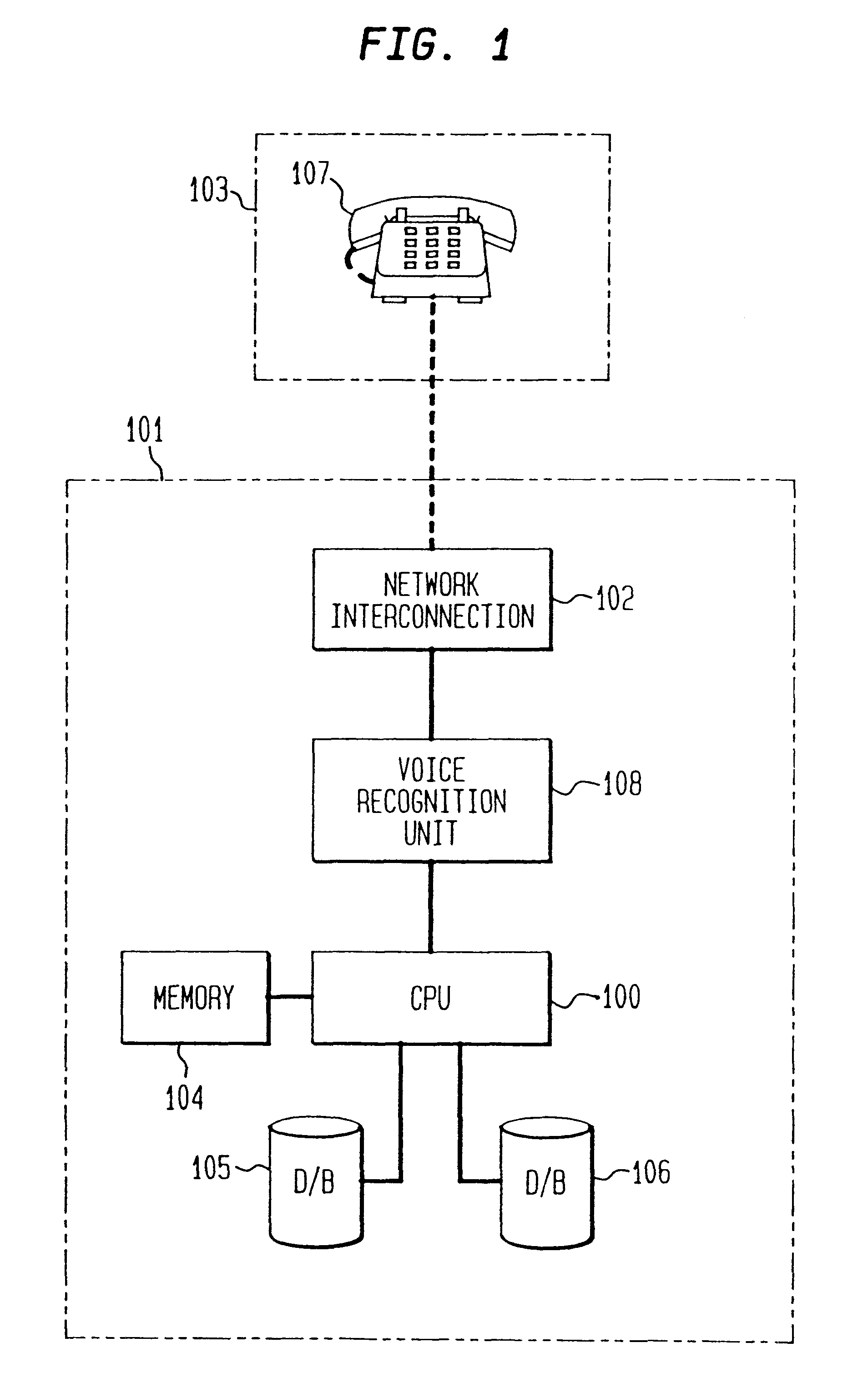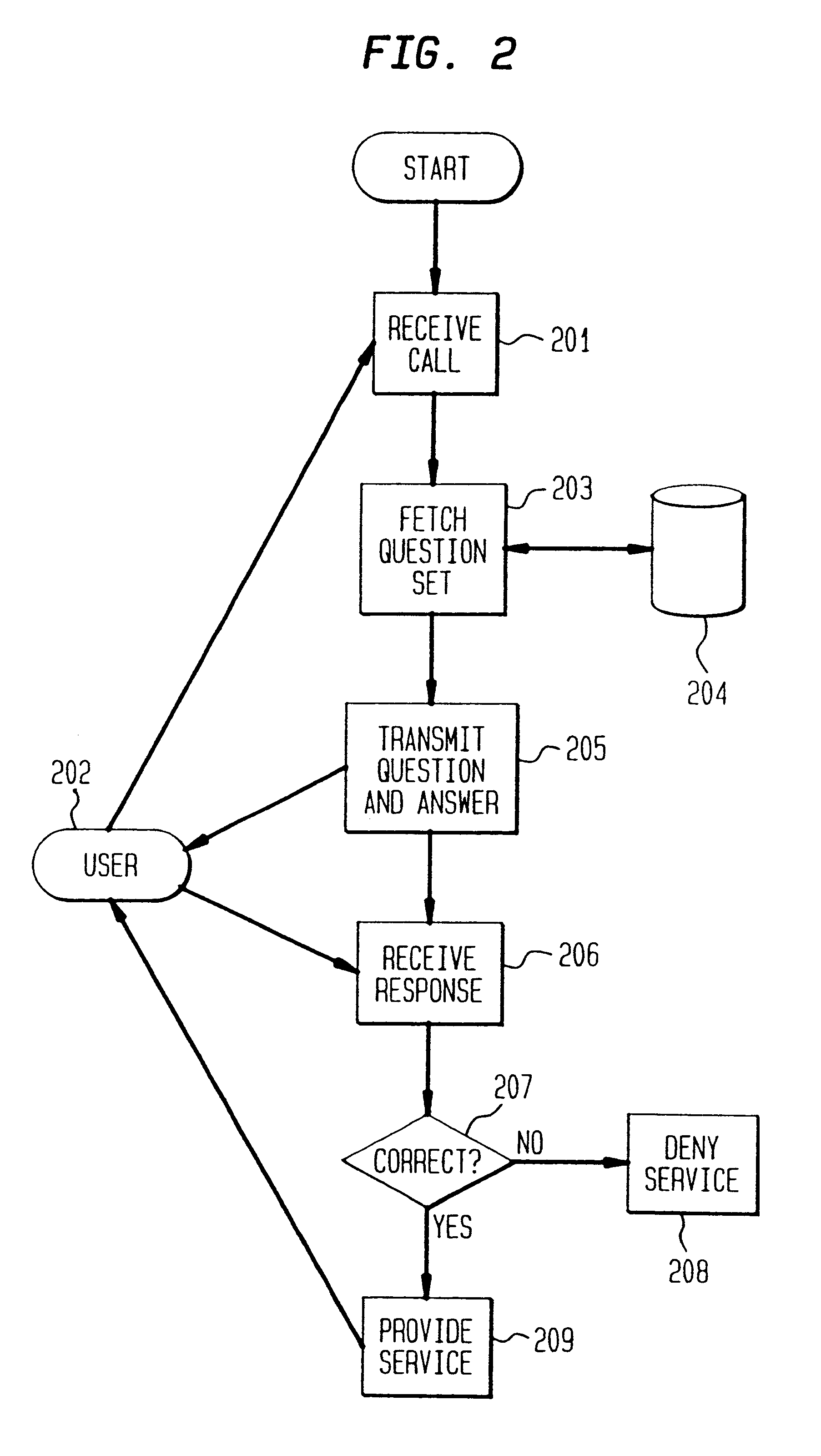Caller identification verification system
a verification system and caller technology, applied in the field of telecommunication security systems, can solve the problems of user being denied the desired service, unable and reducing the probability of gaining entry by guessing, so as to prevent a computer from ha', reduce the probability of gaining entry, and eliminate the ability to determine the correct answer
- Summary
- Abstract
- Description
- Claims
- Application Information
AI Technical Summary
Benefits of technology
Problems solved by technology
Method used
Image
Examples
Embodiment Construction
The present invention is directed to a security system for ascertaining the authenticity of a user before providing the user with a desired service. As used herein, the term "desired service" broadly refers to an information transaction. Examples of desired services include business transactions, such as transferring funds or ordering merchandise, the release of important or confidential information, such as bank account information or medical history, and any other information transaction where a need for security exits. The system is particularly well suited in the field of telecommunications where information services are common and the preference for automation is strong, but where visual identification is typically impractical.
The present system verifies the authenticity of a user by asking for private information and enabling the user to respond with reliable telecommunication input such as touch tones (DTMF) or simple voice commands. As used herein, the term "private informat...
PUM
 Login to View More
Login to View More Abstract
Description
Claims
Application Information
 Login to View More
Login to View More - Generate Ideas
- Intellectual Property
- Life Sciences
- Materials
- Tech Scout
- Unparalleled Data Quality
- Higher Quality Content
- 60% Fewer Hallucinations
Browse by: Latest US Patents, China's latest patents, Technical Efficacy Thesaurus, Application Domain, Technology Topic, Popular Technical Reports.
© 2025 PatSnap. All rights reserved.Legal|Privacy policy|Modern Slavery Act Transparency Statement|Sitemap|About US| Contact US: help@patsnap.com



